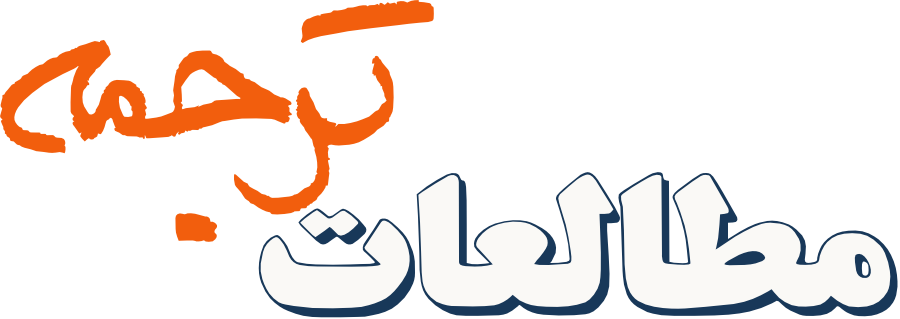سبك نويسنده در ترجمه
گفتمان غيرمستقيم آزاد بهمثابه شاخص سبكي وولف در سه ترجمة فارسي بهسوي فانوس دريايي
چکیده
اين مقاله، ترجمة گفتمان غيرمستقيم آزاد را بهمثابه شاخص سبكي وولف در سه ترجمة فارسي رمان بهسوي فانوس دريايي بررسي ميكند. گفتمان غيرمستقيم آزاد بهمثابه صدايي دوگانه، نشان ميدهد چگونه صداي راوي با ديدگاه شخصيت تركيب ميشود. با اين حال، مسئله اينجاست كه آيا بايد وجوه بازنمايي گفتمان را بهصورت ساختاري در سطح خردـساختار ترجمه كرد يا بهصورت گفتماني در سطح كلانـساختار. گفتمان غيرمستقيم آزاد، ويژگيهايي نحوي، معنايي و سبكي دارد كه ممكن است در فرايند ترجمه دچار تغييراتي شوند. وجه استمراري بهمثابه يكي از ويژگيهاي نحوی، با كانونيشدگي شخصيت در ارتباط است اما راوي آن را به صيغة گذشته از زبان خود گزارش ميكند. از حيث كاركردي، سه مترجم فارسي كوشيدهاند ويژگيهاي نحوي و سبكي متن اصلي را در ترجمة خود نشان بدهند. اين مقاله به شيوة عمدتاً كيفي، ترجمه گفتمان غيرمستقيم آزاد را به فارسي بررسي كرده است. با اين حال، ترجمة صالح حسيني براي حفظ لحن و احساس متن اصلي، گفتمان غيرمستقيم را به مستقيم بازگردانده است. ترجمة كيهان نيز سبك پيچيدة متن اصلي را ساده و تصريح كرده است. ترجمة بجانيان چندان نكوشيده كه سبك وولف را بازگرداند و ترجمهاي عمدتاً تحتاللفظي است. در مجموع، سه ترجمة مختلف از سوی سه مترجم بر آن بودهاند تا ويژگيهاي FID مانند احساس همدلي و همذاتپنداري را به ميزان متفاوت به خوانندگان مقصد انتقال دهند. با اين حال، از ميان سه مترجم، حسيني كوشيده است هم به سبك متن اصلي وفادار بماند و هم ترجمهاي را در اختيار خوانندگان مقصد بگذارد که تأثیری همچون خوانش متنی نگاشتهشده به زبان فارسی را در ذهن آنان برانگیزد.
کلمات راهنما:
سبك نويسنده, وجوه بازنمايي گفتمان, گفتمان غيرمستقيم آزاد, وجه استمراري, سبک ترجمهمراجع
Banfield, A. (1982). Unspeakable Sentences: Narration and representation in the language of fiction. Routledge & Paul Keegan.
Bejâniân, M. (1991). Be sooye fanoos-e daryaei [To the Lighthouse]. Behnegar Publication.
Bosseaux, C. (2001). A study of the translator’s voice and style in the French translations of Virginia Woolf’s The Waves. In M. Olohan (Ed.), CTIS Occasional Papers (pp. 55–57). Centre for Translation & Intercultural Studies.
Bosseaux, C. (2004). Point of view in translation: A corpus-based study of French translations of Virginia Woolf’s To the Lighthouse. Across Languages and Cultures 5(1), 107–122.
Comrie, E. (1976). Aspect. Cambridge University Press.
Delzenderooy, S. (2008). A study of the Persian translations of narrative style: A Case Study of Virginia Woolf's The Waves [Unpublished master’s thesis]. The University of Isfahan.
Ehrlich, S. (1990). Point of view: A linguistic of literary style. Routledge.
Fludernik, M. (2005). Speech Representation. In David Herman, Manfred Jahn, and Marie-Laure Ryan (eds.), Routledge Encyclopedia of Narrative Theory (pp. 558–563). Routledge.
Gharaei, Z. & Dastjerdi, H. V. (2012). Free indirect discourse in Farsi translations of Mrs. Dalloway, Comparative Literature and Culture (CLCWeb).
Horri, A. (2002). A narratological approach to Henry James’ Daisy Miller: A theory and practice [Unpublished master’s thesis]. Allameh Tabatabaei University.
Horri, A. (2007). Barrasiye sabk-e Slehe Hosseini dar magham-e motarjem-e adabi dar dow tarjomehe be sooye Fanoos daryaei va khashm–o-hayahoo [A study of Saleh Hosseini’s style as a literary translator in two Persian translations of To the Lighthouse and the Sound and the Fury] [Unpublished manuscript]. Arak University.
Horri, A. (2010). Tarjome-ye goftman-e gheir-e mostagim azad dar seh tarjomeh-e Farsi be sooye fanoos-e daryaei [Translating free indirect discourse in the three Persian translations of To the Lighthouse]. Pazhuhesh-e zabanha- ye khareji, 57, 19–39.
Horri, A. (2017). Translational narratology: Toward a structural narratology-based approach to translating ‘point of view’ and ‘free indirect discourse’ through ‘deixis’, ‘modality’, and ‘transitivity’ in three Persian translations of V. Woolf’s To the Lighthouse. [Unpublished Ph.D. Dissertation]. Allameh Tabataba’i University.
Hosseini, S. (1994/1370). Be sooye fanoos-e daryaei [To the Lighthouse]. Niloofar Publication.
Keyhân, K. (1378/2008). Be sooye fanoos-e dariaei [To the Lighthouse]. Negah Publication.
Klitgard, I. (2004). Dual voice and dual style: Translating free indirect discourse in Ulysses. Nordic Journal of English Studies, 3(3), 319–345.
Leech, G. N. & Short, M. H. (1981). Style in fiction: A linguistic introduction to English fictional prose. Longman.
McHale, B. (1978). Free indirect discourse: A survey of recent accounts. Poetics and Theory of Literature, 3, 249–87.
Pascal, R. (1977). The dual voice: Free indirect speech and its functioning in the nineteenth-century European novel. Manchester UP.
Plato (1944). Republic (B. Jowett, Trans.). The Heritage Press.
Rimmon-Kennan, S. (2002). Narrative fiction: Contemporary poetics. Methuen.
Ron, M. (1981). Free indirect discourse, mimetic language games, and the subject of fiction. Poetics Today, 2(2), pp. 17–39.
Rouhiainen, T. (2000) ‘Free Indirect Discourse in the Translation into Finnish: The Case of D.H. Lawrence’s Women in Love’, Target 12(1): 109–126.
Simpson, P., & Montgomery, M. (1995). Language, literature, and film: The stylistics of Bernard MacLaverty’s Cal. In P. Verdonk, & J. J. Weber (Eds.), Twentieth-Century Fiction: From Text to Context (pp. 138–164). http://www.routledge.com/books/details/9780415105903/
Toolan, M. (1988). Narrative: A critical linguistic introduction. Routledge.
Woolf, V. (1927). To the lighthouse. Feed books. http://www.feedbooks.coma
Downloads
چاپشده
ارجاع به مقاله
شماره
نوع مقاله
DOR
مجوز
Copyright Licensee: Iranian Journal of Translation Studies. This article is an open access article distributed under the terms and conditions of the Creative Commons Attribution–NonCommercial 4.0 International (CC BY-NC 4.0 license).





